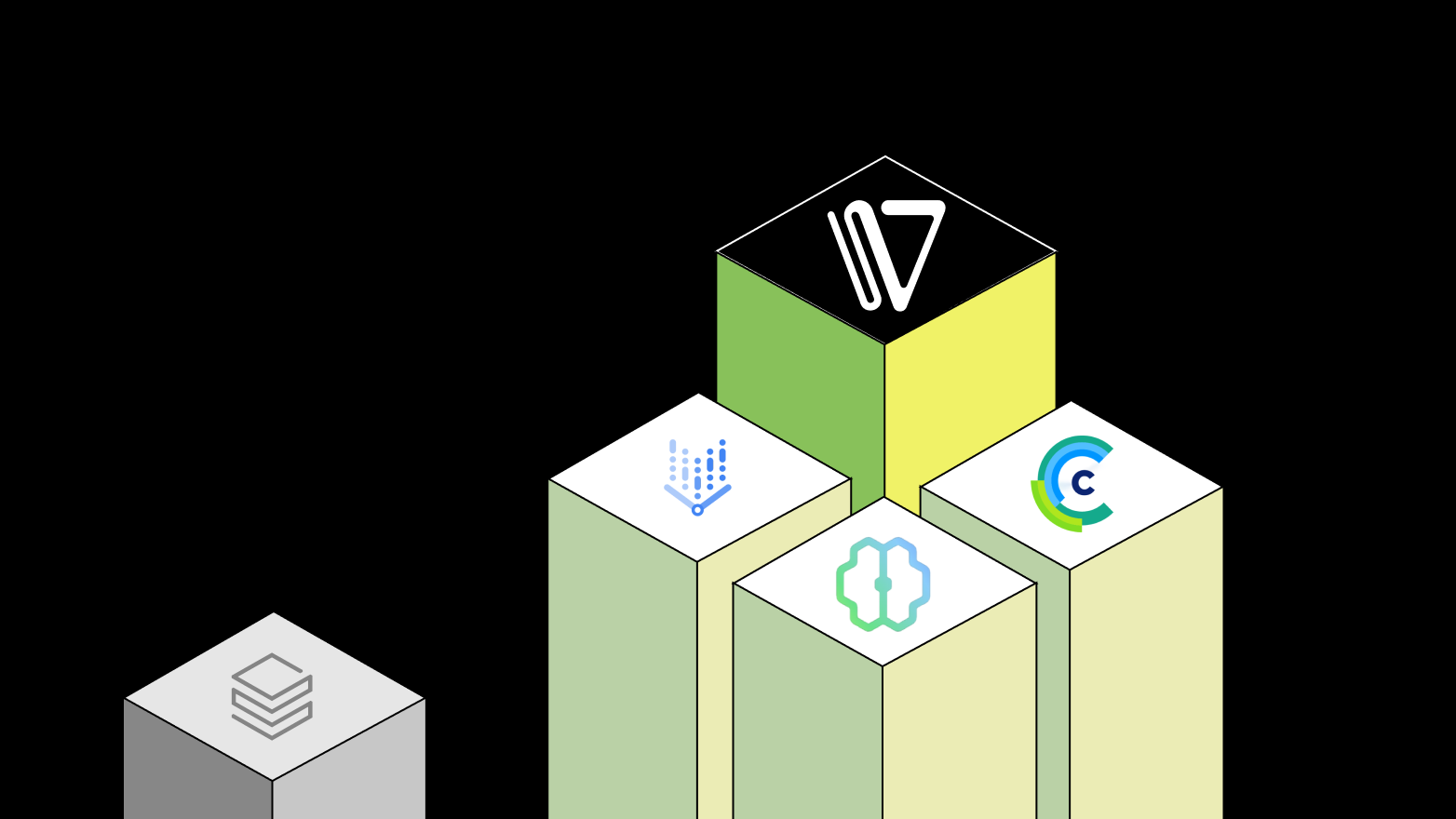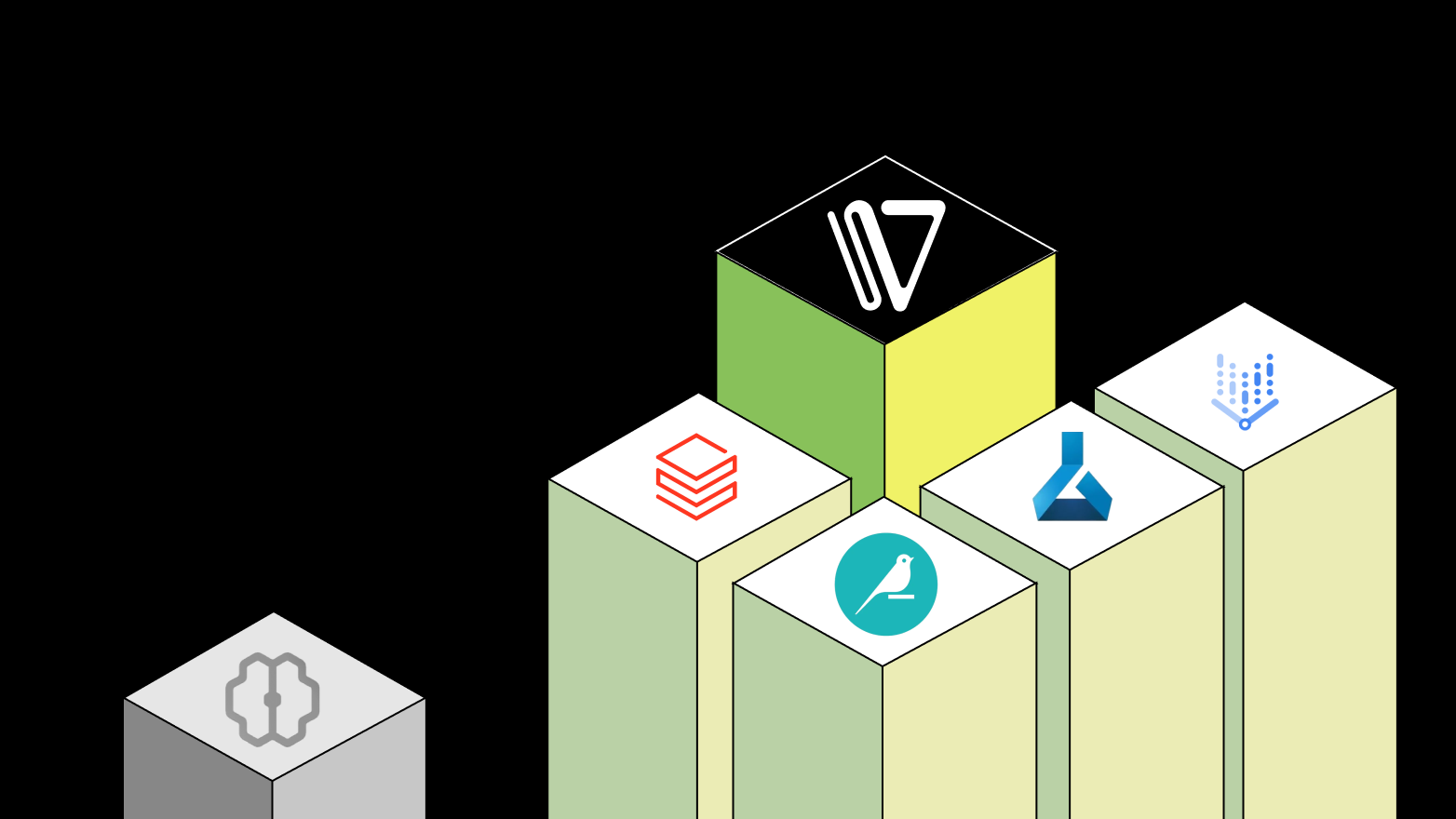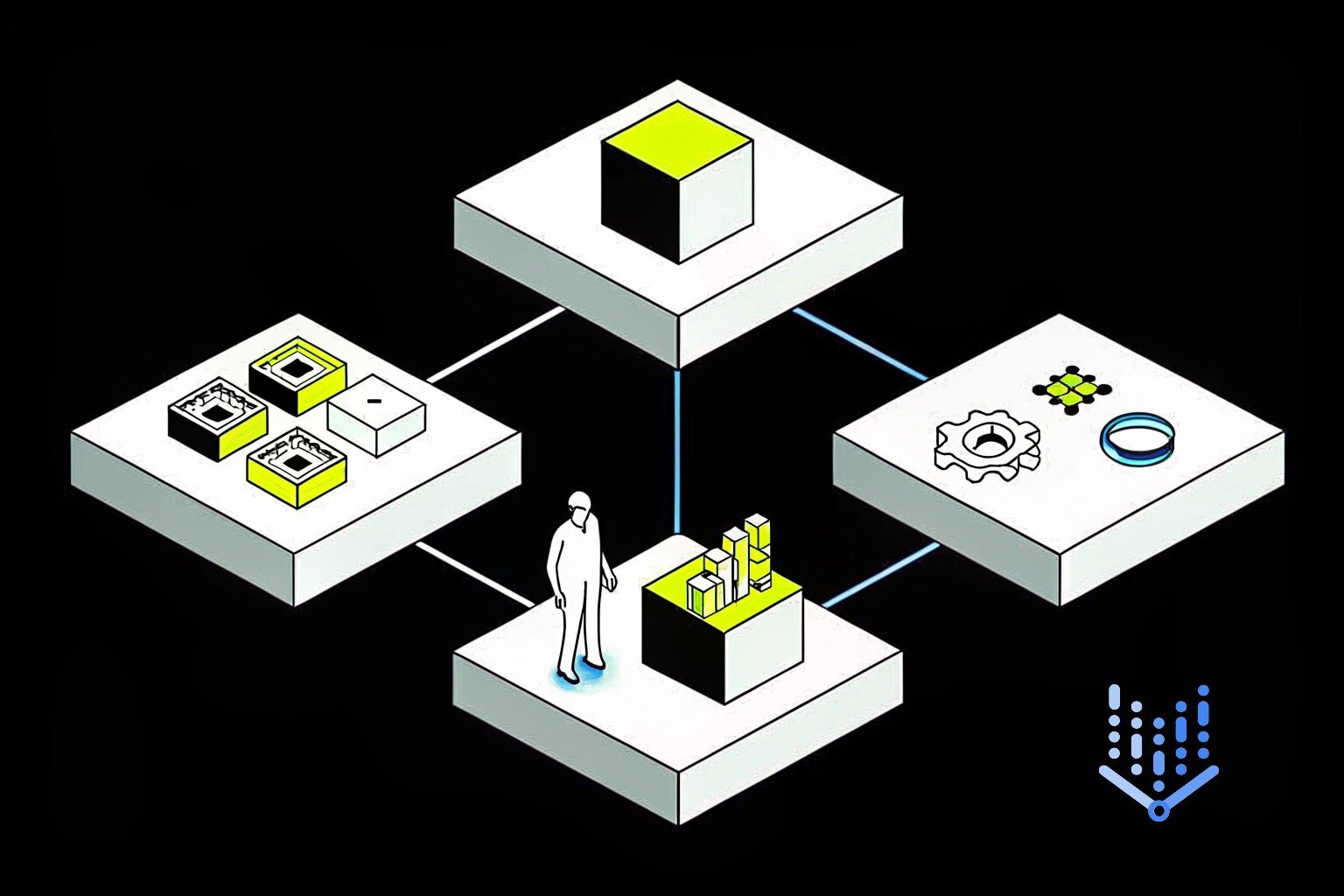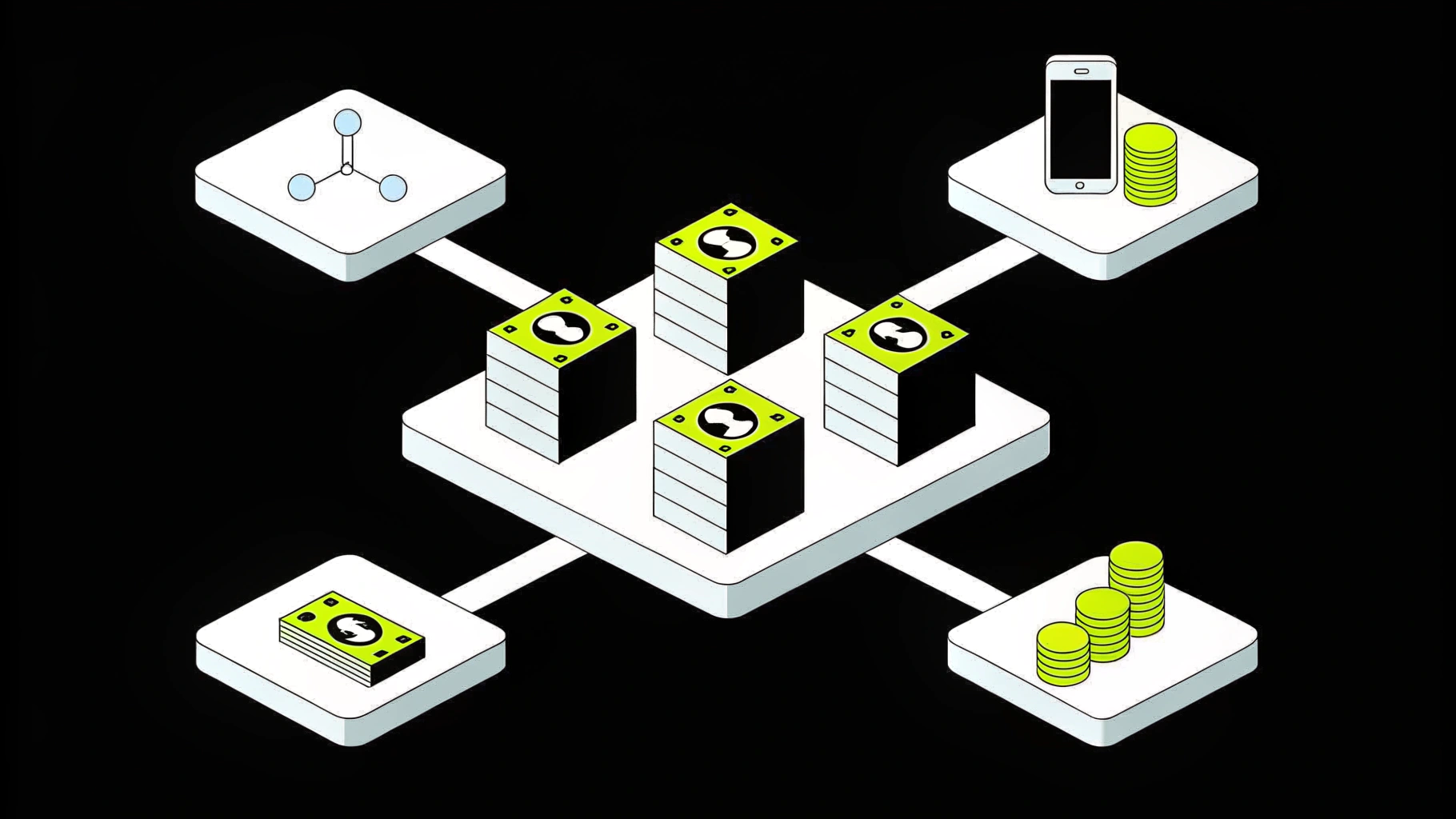Top Databricks Alternatives for Modern AI Development in 2025

Databricks is a cloud-based data and AI platform designed to unify data engineering, data science, analytics, and machine learning workflows. Founded in 2013 by the creators of Apache Spark, Databricks pioneered the “lakehouse” architecture, blending the scalability of data lakes with the performance and governance of data warehouses.
The platform offers a collaborative workspace for managing large datasets, building ETL/ELT pipelines, and developing and deploying machine learning models. Its integration of Spark with MLflow and Delta Lake has made it a mainstay for enterprises running complex data processing at scale.
While Databricks has been an industry leader in big data analytics, the rise of LLMs, RAG pipelines, and agentic AI systems is prompting many teams to look for platforms that offer more portability, modularity, and GenAI-native capabilities. This blog will explore the best Databricks alternatives, why teams are making the switch, and how to choose the right path for your AI journey.
Key takeaways
- Databricks excels at Spark-based analytics and large-scale data engineering but can become costly, complex, and less suited for modern GenAI workflows.
- Teams moving beyond Databricks usually follow one of two paths: building a custom in-house AI platform or adopting a modern AI development platform.
- Custom builds give maximum control but require heavy engineering investment and ongoing maintenance.
- AI development platforms like SageMaker, Vertex AI, ClearML, and especially Cake offer modular, cloud-agnostic infrastructure designed for today’s LLMs, RAG pipelines, and agentic AI systems.
Why teams are looking beyond Databricks
Databricks has been a go-to for big data analytics, but as AI workloads shift toward LLMs, RAG systems, and agentic workflows, many teams find it less aligned with their current needs.
The main reasons organizations start exploring alternatives include:
- Spark dependency becomes a bottleneck: For modern AI workloads that aren’t inherently Spark-based, integrating Databricks with frameworks like LangChain, Ray, or Hugging Face can feel like forcing mismatched toolsets together.
- Rising costs: Between compute charges, licensing, and engineering overhead, total cost of ownership can escalate quickly as you scale.
- Limited GenAI-native tooling: Databricks is optimized for analytics-first use cases; deploying and managing LLMs often requires additional tooling and integrations.
- Vendor lock-in: Databricks’ close tie to specific cloud environments and proprietary services can hinder multi-cloud or hybrid strategies.
- Desire for modular, swappable infrastructure: Mature AI teams often want to assemble a stack with interchangeable components rather than rely on a single monolithic platform.
If your roadmap is centered on production-grade AI systems (fine-tuned LLMs, complex retrieval pipelines, cross-cloud deployments) Databricks may not be the most strategic foundation.
Two main paths beyond Databricks
Once you decide to move beyond Databricks, the decision usually comes down to how much control you want over your infrastructure and how fast you need to move.
You can either:
- Build a fully custom AI platform in-house, assembling and managing every component yourself
- Adopt a modern AI development platform that provides modularity, portability, and built-in compliance without the operational burden
1. Build a custom in-house AI platform
Building your own AI platform gives you full control over the architecture, technology choices, and deployment environment. This often involves:
- Standing up Kubernetes clusters, GPU/TPU compute, and storage
- Selecting and integrating open-source MLOps tools (Ray, MLflow, KServe, Kubeflow, etc.)
- Implementing observability stacks (Prometheus, Grafana, etc.)
- Building governance and compliance workflows from scratch
Pros
- Maximum flexibility—choose the exact tools and frameworks you want
- Tailored to your compliance, security, and performance needs
Limitations
- High upfront investment—can take months to build and stabilize
- Ongoing maintenance burden—requires dedicated platform engineering
- Slower time-to-market—delays AI product deployment compared to managed options
2. Adopt an AI development platform
Modern AI development platforms combine flexibility with speed. They provide pre-integrated tooling for training, serving, and monitoring models—while remaining portable and open-source-friendly.
With the right AI platform, you get:
- Built-in orchestration for LLMs, RAG pipelines, and fine-tuning
- Multi-cloud and hybrid deployment options
- Preconfigured compliance and governance controls
- Integration with best-in-class OSS tools
AWS SageMaker
Amazon SageMaker is AWS’s flagship ML platform, offering a broad suite of tools for building, tuning, and deploying machine learning models inside the AWS ecosystem. It includes JumpStart for pre-trained models, Model Monitor for observability, and Pipelines for end-to-end workflow management.
Pros
- Deep integration with AWS services (S3, Redshift, Bedrock, etc.)
- Built-in governance and monitoring with Model Monitor and Pipelines
- Access to foundation models via Amazon Bedrock
Limitations
- AWS-only—no cross-cloud portability
- Less flexible for open-source orchestration
- Complex pricing structure
Google Vertex AI
Vertex AI is Google Cloud’s all-in-one AI development platform. It brings together model training, deployment, and monitoring, with direct access to Gemini foundation models and pre-integrated services like AutoML, BigQuery, and Dataflow.
Pros
- Access to Gemini and PaLM models
- Pre-integrated AutoML, BigQuery, and Dataflow pipelines
- Managed infrastructure for fast prototyping
Limitations
- GCP-only—no cross-cloud deployment
- Prioritizes Google tools over OSS frameworks
- Limited flexibility for complex, custom GenAI pipelines
ClearML
ClearML is an open-source-first MLOps platform designed for teams that want full control over orchestration, experimentation, and deployment workflows. It supports hybrid and on-prem setups with agent-based job scheduling and queue-based execution models.
Pros
- Fully open-source and self-hostable
- Works across cloud, hybrid, and on-prem environments
- Fine-grained control over orchestration and experimentation
Limitations
- Requires manual setup and security hardening
- Fewer out-of-the-box enterprise compliance features
Cake — Best overall alternative to Databricks
Cake is a cloud-neutral, open-source-first AI development platform built for modern LLM and GenAI workloads. It replaces Spark dependency with a modular architecture that supports fine-tuning, RAG orchestration, and multi-agent systems—while running in any cloud, any region, or on-prem.
With Cake, you can:
- Deploy proprietary or OSS LLMs without vendor lock-in
- Integrate vector DBs, orchestration layers, and model runners of your choice
- Enforce enterprise-grade security (RBAC, audit logs, policy controls) from day one
- Save 6–12 months of engineering time and 30–50% in infra costs
AI SUCCESS STORY: Glean.ai + Cake
Glean.ai, a financial intelligence platform, wanted to improve the accuracy and control of its AI-powered expense analysis while reducing its reliance on costly external APIs. Using external LLM providers meant they had limited visibility into model behavior, unpredictable costs, and no ability to customize performance for their unique use cases.
By moving to Cake, Glean.ai was able to bring LLM training, fine-tuning, and deployment fully in-house—while maintaining enterprise-grade compliance and observability. This shift delivered:
Significant accuracy gains: Model accuracy improved from 70% to 90% through targeted fine-tuning on Glean’s proprietary financial datasets.
Lower operational costs: Overall AI infrastructure costs dropped by 30%, largely by eliminating per-token API fees and optimizing compute usage.
Faster iteration cycles: New model features could be deployed in days instead of weeks, enabling rapid experimentation and adaptation to user needs.
Full-stack observability: Glean.ai gained end-to-end tracing, logging, and evaluation, allowing them to debug model behavior and track quality in production.
Zero new headcount required: The transition to an in-house LLM stack was handled without hiring additional engineers, thanks to Cake’s pre-integrated MLOps and orchestration tooling.
By using Cake, Glean.ai achieved greater control over its AI roadmap, reduced risk, and positioned itself to continually improve its models without external constraints—something that would have been costly and complex to achieve with Databricks or other closed, vendor-tied platforms.
Read the full success story here.
Databricks alternatives: Feature comparison
|
|
Cake |
SageMaker |
Vertex AI |
ClearML |
|
|
Cloud portability |
✅ Multi-cloud & on-prem |
❌ AWS-only |
❌ GCP-only |
✅ Multi-cloud & on-prem |
|
|
GenAI readiness |
✅ Built for LLMs, RAG, agents |
⚠️ Bedrock integration |
⚠️ Gemini-focused |
⚠️ BYO GenAI stack |
|
|
Open-source support |
✅ Full OSS-native stack |
⚠️ Limited |
⚠️ Limited |
✅ Full support |
|
|
Compliance & security |
✅ Enterprise-ready |
✅ Strong in AWS |
✅ Strong in GCP |
❌ Minimal by default |
|
|
MLOps orchestration |
✅ Integrated, modular |
✅ Pipelines, Model Monitor |
✅ Built-in pipelines |
✅ Agent-based |
|
Making the switch: tips for a smooth transition from Databricks
Moving off of Databricks doesn’t have to be an all-or-nothing leap. With the right planning, you can migrate incrementally, reduce disruption, and set your AI team up for success.
Easing in: manage the learning curve
Start by identifying your most pressing pain points—maybe it’s model orchestration, maybe it’s cost. Begin with a single workflow or component (like moving model serving off Databricks) and test it in an alternative environment. Platforms like Cake make it easy to swap in parts of your stack one layer at a time.
Smooth migration: plan for compatibility
Before migrating data or workloads, confirm that your current formats, dependencies, and pipelines are supported by your new platform. With Cake, for example, you can keep using tools like MLflow, Hugging Face, or LangChain—just with more control and visibility.
Upskill the team: invest in onboarding
Choose a platform with great documentation, open standards, and community support. Whether it’s SSO integration, container orchestration, or a custom fine-tuning workflow, make sure your team has access to training materials or technical guidance.
Reduce risk by going modular
You don’t have to replicate your entire setup overnight. Break down your AI workflows into modules (data prep, training, deployment, and monitoring) and migrate them in phases. This lowers risk and builds team confidence as you transition.
The right path for your AI journey
Choosing a Databricks alternative is more than swapping tools—it’s a strategic decision that shapes how you build, deploy, and scale AI.
If you’re heavily invested in AWS and have established ML pipelines, SageMaker may offer the smoothest migration. If you operate entirely in GCP and want rapid access to Google models, Vertex AI could be a fit. If you want OSS-first flexibility and are prepared to manage more yourself, ClearML is worth exploring.
But if your roadmap includes multi-cloud LLM deployment, RAG orchestration, foundation model customization, and scaling AI as a core product capability, Cake offers the most future-ready approach:
- Modular, open-source-first architecture
- Enterprise-grade compliance and governance
- Proven cost and time-to-market advantages
- Deployment in any cloud or on-premises environment
See how Cake compares to your current stack. Book a demo with our team today.
Related articles
- AWS SageMaker Alternatives: The Best Options for AI Development in 2025
- Google Vertex AI Alternatives: Portability, Compliance, and Control for Modern AI Teams
- The Future of AI Ops: Exploring the Cake Platform Architecture
- How Glean Cut Costs and Boosted Accuracy with In-House LLMs
- Success Story: How Ping Rapidly Established ML Leadership
Frequently asked questions
What is Databricks used for?
A unified platform for data engineering, analytics, and ML, built around Apache Spark and the lakehouse architecture.
Why move away from Databricks?
High costs, Spark dependency, limited GenAI-native tooling, and vendor lock-in are the most common reasons.
Can I migrate gradually from Databricks?
Yes—platforms like Cake support incremental migration, letting you swap out components one at a time.
Which alternative is best for open-source workflows?
Cake and ClearML both offer strong OSS support, but Cake adds built-in enterprise compliance and orchestration.
Is Cake a good Databricks replacement?
Yes—Cake is built for modern GenAI, offers cloud-neutral deployment, integrates with best-in-class OSS tools, and reduces both cost and time to production.
About Author

Cake Team
More articles from Cake Team
Related Post

Beyond SageMaker: AI Platforms Built for Speed, Data Control, and Security

Cake Team

Google Vertex Alternatives: Portability, Compliance, and Control

Cake Team

Real-World AI Applications: Transforming Industries

Cake Team

Save $500K–$1M Annually on Each LLM Project with Cake

Cake Team